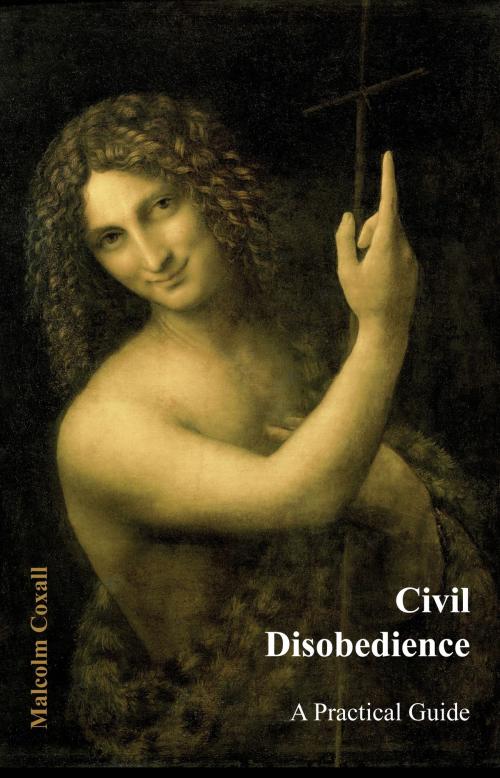Civil Disobedience
A Practical Guide
Nonfiction, Social & Cultural Studies, Political Science, Politics, Civil Rights| Author: | Malcolm Coxall | ISBN: | 9788494178382 |
| Publisher: | Malcolm Coxall | Publication: | April 20, 2015 |
| Imprint: | Malcolm Coxall - Cornelio Books | Language: | English |
| Author: | Malcolm Coxall |
| ISBN: | 9788494178382 |
| Publisher: | Malcolm Coxall |
| Publication: | April 20, 2015 |
| Imprint: | Malcolm Coxall - Cornelio Books |
| Language: | English |
Traditional democratic structures in the Western world are coming under increasing pressure. A combination of political corruption, voter apathy and attacks on the rights of the citizen are being driven by authoritarian tendencies not seen for generations. In turn, this is being stoked by an artificial climate of fear, choreographed as a narrative of external terrorist threats and war against yet another "evil empire".
Much of the decision-making of government has been bought or hijacked by big business, whilst a whole generation of citizens has become increasingly cynical about the probity and ethics of their politicians. The current extent of public distrust and antagonism for the political elite is matched only by shocking levels of voter apathy throughout the democratic world.
This situation has created an unhealthy and perilous disconnection between the electorate and the political classes. As in any evolving environment, this gap is being filled. In this case, the democratic deficit is being bypassed using various forms of civil rebellion as a substitute for a functioning parliamentary system.
Nonviolent rebellion has a long history, but since the industrial revolution the use of organised civil disobedience has become increasingly widespread and refined. With the advent of the internet, civil rebellion itself has been totally revolutionised. The rules of the game have truly changed and control of "the truth" has, to some extent, finally been democratised.
These days, the big beasts on the political landscape are no longer labour unions fighting a local cause, but global movements, representing hundreds of millions of activists across a borderless world. And their armoury is formidable. Even the smallest local protest group has been immensely empowered by recent technological change.
Here we present a practical guide to civil rebellion, defining more than 300 separate ways in which citizens may effectively deliver a protest to an authority and the public, either alone or in a group.
In comparison with the ballot box, civil disobedience seems a rough way of dealing with authority. But, in the absence of a functioning democracy, it is rapidly becoming the last resort of the citizen to defend their freedom from an increasingly reviled, dysfunctional and autocratic political establishment.
This book is a practical guide. It is designed to help in the routine planning and organisation of peaceful protest. But the book also includes a history of civil rebellion and a moral and legal discussion of how civil disobedience may be used to achieve political objectives. This practical information is supported by a description of the best techniques for use in the strategic planning of protest actions and the management of protest organisations.
Though based on a wealth of protest history, the emphasis here is contemporary protest and focuses especially on the impact of internet and communications technology on current protest strategy.
Politically, this guide pays particular attention to the techniques used by authorities to infiltrate and undermine legitimate civil protest movements and how these efforts can be detected and managed by a protest group. The book also provides practical advice on using similar subversive techniques against unscrupulous authorities.
Above all, the objective of this guide is to facilitate responsible political activists in delivering powerful, effective, nonviolent protests to an authority and to do this in a way which positively reinforces the concepts of democracy and universal human rights.
At a time when both democracy and human rights are threatened by the constant attacks by political opportunists, civil disobedience is beginning to move centre stage. Indeed, it seems to be rapidly becoming the only show in town for the aggrieved citizen of liberal persuasions in a world drowning in political corruption, popular apathy and short-sighted, populist political culture.
Traditional democratic structures in the Western world are coming under increasing pressure. A combination of political corruption, voter apathy and attacks on the rights of the citizen are being driven by authoritarian tendencies not seen for generations. In turn, this is being stoked by an artificial climate of fear, choreographed as a narrative of external terrorist threats and war against yet another "evil empire".
Much of the decision-making of government has been bought or hijacked by big business, whilst a whole generation of citizens has become increasingly cynical about the probity and ethics of their politicians. The current extent of public distrust and antagonism for the political elite is matched only by shocking levels of voter apathy throughout the democratic world.
This situation has created an unhealthy and perilous disconnection between the electorate and the political classes. As in any evolving environment, this gap is being filled. In this case, the democratic deficit is being bypassed using various forms of civil rebellion as a substitute for a functioning parliamentary system.
Nonviolent rebellion has a long history, but since the industrial revolution the use of organised civil disobedience has become increasingly widespread and refined. With the advent of the internet, civil rebellion itself has been totally revolutionised. The rules of the game have truly changed and control of "the truth" has, to some extent, finally been democratised.
These days, the big beasts on the political landscape are no longer labour unions fighting a local cause, but global movements, representing hundreds of millions of activists across a borderless world. And their armoury is formidable. Even the smallest local protest group has been immensely empowered by recent technological change.
Here we present a practical guide to civil rebellion, defining more than 300 separate ways in which citizens may effectively deliver a protest to an authority and the public, either alone or in a group.
In comparison with the ballot box, civil disobedience seems a rough way of dealing with authority. But, in the absence of a functioning democracy, it is rapidly becoming the last resort of the citizen to defend their freedom from an increasingly reviled, dysfunctional and autocratic political establishment.
This book is a practical guide. It is designed to help in the routine planning and organisation of peaceful protest. But the book also includes a history of civil rebellion and a moral and legal discussion of how civil disobedience may be used to achieve political objectives. This practical information is supported by a description of the best techniques for use in the strategic planning of protest actions and the management of protest organisations.
Though based on a wealth of protest history, the emphasis here is contemporary protest and focuses especially on the impact of internet and communications technology on current protest strategy.
Politically, this guide pays particular attention to the techniques used by authorities to infiltrate and undermine legitimate civil protest movements and how these efforts can be detected and managed by a protest group. The book also provides practical advice on using similar subversive techniques against unscrupulous authorities.
Above all, the objective of this guide is to facilitate responsible political activists in delivering powerful, effective, nonviolent protests to an authority and to do this in a way which positively reinforces the concepts of democracy and universal human rights.
At a time when both democracy and human rights are threatened by the constant attacks by political opportunists, civil disobedience is beginning to move centre stage. Indeed, it seems to be rapidly becoming the only show in town for the aggrieved citizen of liberal persuasions in a world drowning in political corruption, popular apathy and short-sighted, populist political culture.















